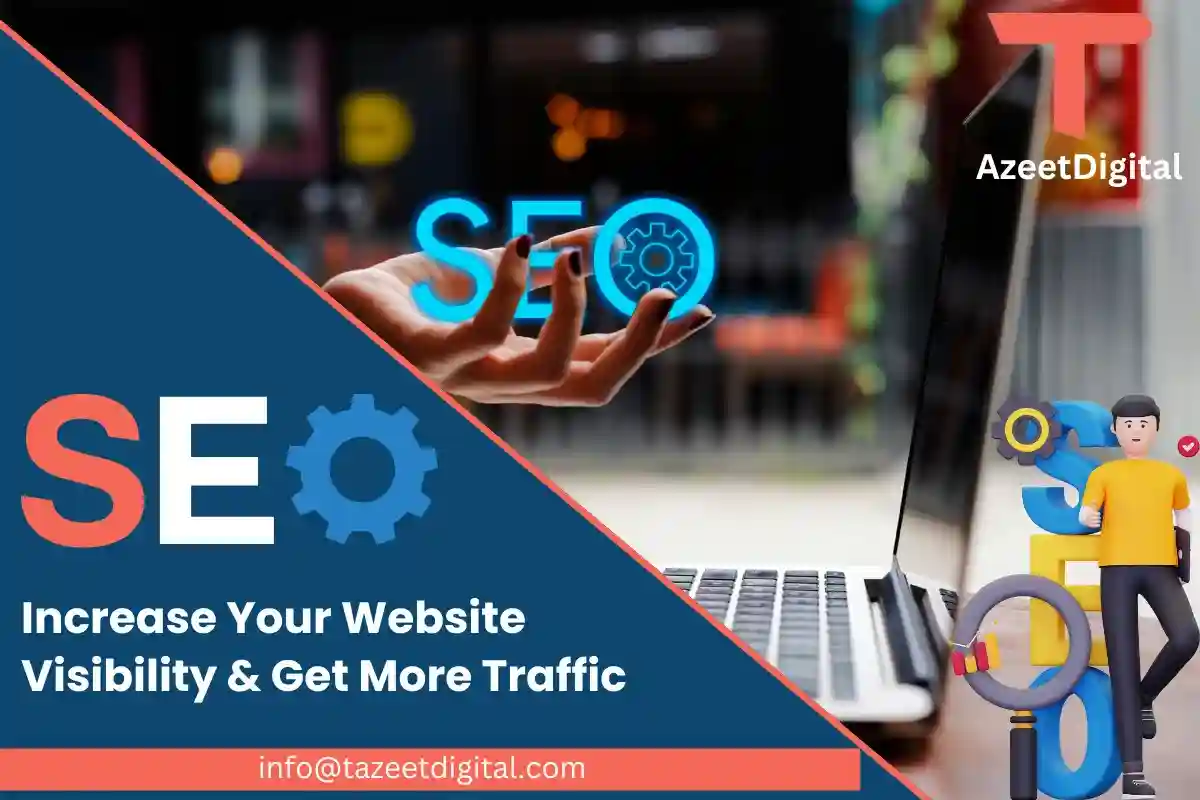Welcome to Tazeet Digital’s comprehensive guide on understanding the basics of SEO (Search Engine Optimization). If you’re looking to enhance your online presence, attract more traffic, and ultimately convert visitors into customers, this guide is for you. Whether you’re a business owner in the US or UAE, this detailed guide will help you grasp the concepts of SEO basics and how you can leverage them to boost your digital marketing efforts.
What is SEO?
SEO stands for Search Engine Optimization. It is the process of optimizing your website to rank higher in search engine results pages (SERPs) like Google, Bing, and Yahoo. The ultimate goal of SEO is to increase organic (non-paid) traffic to your site. SEO involves a variety of strategies, from keyword research and content creation to link building and technical optimizations.
Why is SEO Important?
- Increased Visibility: The higher your site ranks on SERPs, the more likely users will visit your site.
- Credibility and Trust: Websites that rank well are often perceived as more credible and trustworthy.
- Better User Experience: Good SEO practices improve the overall user experience on your site.
- Higher ROI: SEO often yields a higher return on investment compared to other forms of online marketing.
Key Components of SEO
1. Keyword Research
Keyword research is the foundation of any successful SEO strategy. It involves identifying the terms and phrases your target audience is searching for. Tools like Google Keyword Planner, SEMrush, and Ahrefs can help you find relevant keywords with good search volume and low competition.
Steps for Effective Keyword Research:
- Brainstorm Topics: Think about the main topics relevant to your business.
- Use Keyword Tools: Utilize keyword research tools to find related keywords.
- Analyze Competitors: Look at what keywords your competitors are ranking for.
- Long-Tail Keywords: Focus on long-tail keywords, which are more specific and often less competitive.
2. On-Page SEO
On-page SEO refers to the optimization of individual web pages to rank higher and earn more relevant traffic. It involves optimizing both the content and HTML source code of a page.
Key Elements of On-Page SEO:
- Title Tags: Create compelling and keyword-rich title tags.
- Meta Descriptions: Write descriptive meta descriptions that include target keywords.
- Headings (H1, H2, H3): Use headings to structure your content and include keywords.
- URL Structure: Keep URLs short, descriptive, and keyword-rich.
- Content Optimization: Ensure your content is valuable, engaging, and optimized for keywords.
- Internal Linking: Link to other relevant pages on your site to improve navigation and SEO.
3. Off-Page SEO
Off-page SEO involves activities outside your website that impact your rankings within SERPs. The most important aspect of off-page SEO is link building, which refers to acquiring backlinks from other websites.
Strategies for Effective Off-Page SEO:
- Quality Backlinks: Focus on getting backlinks from high-authority websites.
- Guest Blogging: Write guest posts for reputable sites in your industry.
- Social Media Engagement: Engage with your audience on social media platforms.
- Influencer Outreach: Collaborate with influencers to increase your reach.
- Local SEO: Optimize your site for local searches, especially if you have a physical location.
4. Technical SEO
Technical SEO refers to the optimization of your website’s infrastructure to make it easy for search engines to crawl and index your site.
Key Technical SEO Elements:
- Website Speed: Ensure your site loads quickly.
- Mobile-Friendliness: Optimize your site for mobile devices.
- XML Sitemaps: Create and submit an XML sitemap to search engines.
- Robots.txt: Use a robots.txt file to control which pages search engines can crawl.
- Secure Website (HTTPS): Ensure your website is secure by using HTTPS.
5. Content Marketing
Content marketing and SEO go hand-in-hand. High-quality, relevant content is essential for ranking well in search engines.
Content Marketing Tips:
- Create Valuable Content: Produce content that provides value to your audience.
- Consistency: Publish content regularly.
- Content Types: Use a variety of content types, including blog posts, videos, infographics, and podcasts.
- SEO Content: Optimize your content for SEO by including keywords, using proper formatting, and ensuring readability.
Local SEO for US and UAE Markets
If you’re targeting clients in the US and UAE, local SEO is crucial. Local SEO focuses on optimizing your online presence to attract more business from relevant local searches.
Local SEO Tips:
- Google My Business: Create and optimize your Google My Business listing.
- Local Keywords: Use local keywords in your content and meta tags.
- NAP Consistency: Ensure your Name, Address, and Phone number (NAP) are consistent across all online platforms.
- Local Citations: Get listed in local directories and citation sites.
- Reviews: Encourage satisfied customers to leave positive reviews on Google and other review sites.
SEO Best Practices
1. Stay Updated with SEO Trends
SEO is an ever-evolving field. Keep up with the latest trends and algorithm updates from search engines.
2. Focus on User Experience
Search engines prioritize websites that provide a good user experience. Make sure your site is easy to navigate, mobile-friendly, and offers valuable content.
3. Use Analytics
Regularly analyze your SEO performance using tools like Google Analytics and Google Search Console. Track your rankings, traffic, and user behavior to make informed decisions.
4. Quality Over Quantity
Focus on acquiring high-quality backlinks and producing high-quality content. A few strong links and well-crafted pieces of content can be more effective than numerous low-quality ones.
5. Ethical SEO Practices
Avoid black hat SEO techniques like keyword stuffing, cloaking, and buying links. These can lead to penalties from search engines.
Common SEO Mistakes to Avoid
1. Ignoring Mobile Optimization
With the majority of users accessing the internet via mobile devices, mobile optimization is crucial for SEO success.
2. Overlooking Local SEO
If you have a local business, not optimizing for local search can result in missed opportunities.
3. Neglecting Technical SEO
Technical SEO is the backbone of a well-optimized site. Issues like slow loading times, broken links, and poor site structure can harm your rankings.
4. Not Utilizing Analytics
Failing to use analytics tools means you’re missing out on valuable insights that can improve your SEO strategy.
5. Poor Content Quality
Content that is not valuable, engaging, or relevant will not perform well in search engines, regardless of how optimized it is.
Conclusion
Understanding the basics of SEO is essential for any business looking to improve its online presence. At Tazeet Digital, we specialize in helping businesses in the US and UAE achieve their SEO goals. By implementing effective SEO strategies, you can attract more traffic, increase your visibility, and grow your business. If you’re ready to take your SEO efforts to the next level, contact us today and let us help you dominate the search engines.
Thank you for reading our comprehensive guide on SEO basics. Stay tuned for more insights and tips on how to optimize your website for better search engine rankings. If you have any questions or need personalized SEO services, feel free to reach out to Tazeet Digital. We’re here to help you succeed in the digital world.




